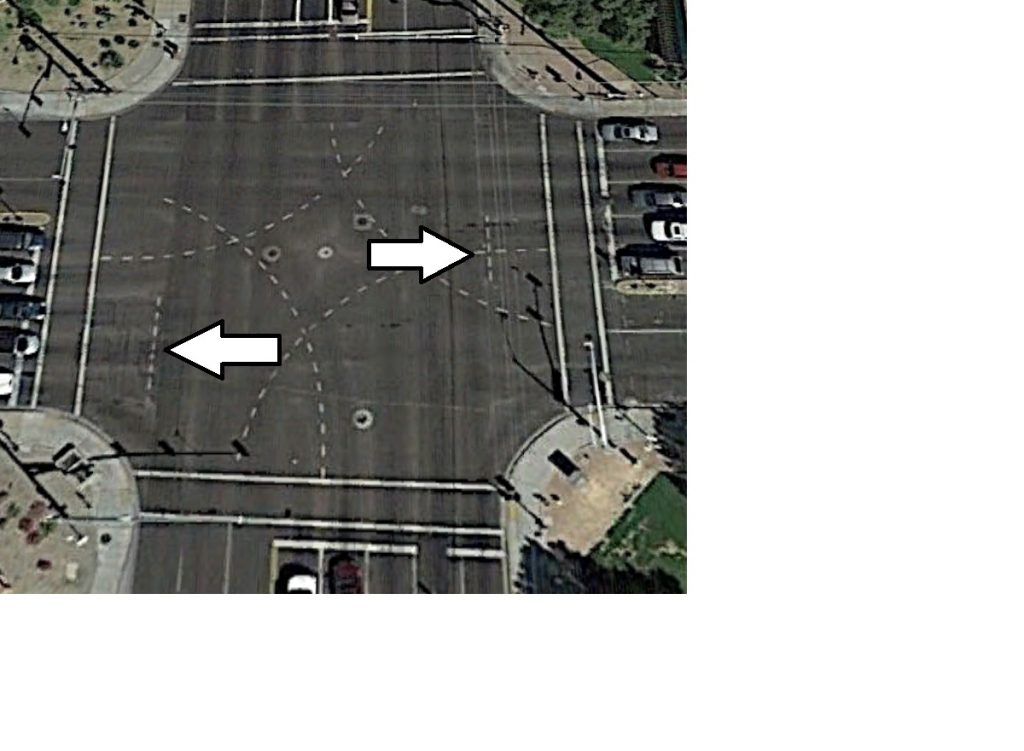In my home town, drivers reportedly run red lights 120,000+ times each day!
First, there are two basic types of red light runners—there’s the daydreamer or distracted driver who just doesn’t see it, and then there’s the driver who’s impatient and accelerates on the yellow signal instead of stopping and waiting the average 45 seconds of a signal cycle! Some of us are guilty of both offenses. Are we really in that much of a hurry? Running red lights kills hundreds of us every year.
What constitutes running a red light? It means your vehicle entered the intersection after the signal turned red. In order to know whether you’ve entered an intersection, you must know where the intersection begins. The boundary is farther out than you might think, and that causes part of the problem. Here’s the definition in my state: the intersection boundary (in Arizona) is the Prolongation of the lateral curb lines (of two or more cross streets).
The lateral curb line is an unpainted line drawn from corner to corner—just imagine a line drawn from the “point” of each corner (where the outer edge of the sidewalk meets the outer edge of the cross street sidewalk) across the street to the next one. (The dotted line in the image at the right shows the “lateral curb line.”) The painted stop line and crosswalk are typically several feet nearer to you than the boundary, and many drivers erroneously believe the last crosswalk line marks the edge of the intersection. This error can result in an extra bit of time for the light to turn red before you actually enter the intersection, resulting in a violation.
In my state, if you entered the intersection legally (on a green or yellow signal), you have the right to clear the intersection even after it turns red. You will find that most states have similar provisions so that left turning traffic doesn’t get bogged. In all of this, though, the legalities are not the most important issue.
In the defensive driving world, we say, “the green light anticipator met the red light procrastinator.” The collision of these two is usually a “T-bone” – where the two vehicles meet at a 90 degree angle. It’s not a “nice” collision. The typical speed through an intersection is over 50 mph! You’d find this is one of the most commonly fatal collisions – one in which seat belts and normal rear-firing air bags won’t help you much.
Be careful around intersections. If you get a yellow light, stop. You can anticipate when the light is about to change, so it is no excuse to say it was too late. If you have the green light, watch for the red-light runner—look left, right, then left AGAIN to make sure the intersection is going to be safe before you enter it, even on one-way streets (because somebody might be going the wrong way AND running red lights). Red light runners are often speeding as well, so make sure you look down the road far enough to see them coming.
Running red lights is too dangerous, both for you and for others, no matter how pressured or late you are. Slow down, grow some patience! Pay attention to your driving so you aren’t one of the oblivious red-light runners. If you get a red light ticket come to our defensive driving class and get it dismissed. www.2passdd.com

